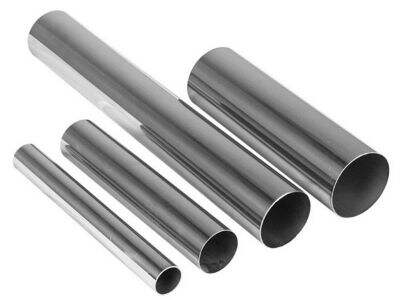Is fíor dúshlánacha iolraí mar a dhéanann cneamh GI. Tógtaí go háirithe iad ón n-ghalvaneáil féin. Tosaíonn na dúshláin seo le feabhsú ar fad, agus bíonn siad in ann uisce, olann agus gás a thógáil trína gcéad. Tá tuiscint againn nach dtiocfaidh an méid seo den chneamh seo isteach i gcás briste nó críochnaithe de bharr seachnadh fada. Mar thoradh ar a dianacht, úsáidtear iad go hiomlán i gceangaltainn éagsúla. Ach cad is ea an cheist, conas gi pipe a chruthaíonn? Agus cad is ea sin a dhéanann orthu an-mhaith agus le cúram fada?
Ó mheatal go píob
Cruthaítear na píobaí GI ó phíosa chóir dhearg meatal. Cuirtear an meatal seo tríd mhachan mór a fhormaíonn é mar phíob chineálta. Is ceann deireanach an chéim seo chun cinntiú go ndéanann an phíob é a dhéanfar. Nuair a bheidh sé cruthaithe, cuirtear córa ar an phíob ansin, rud a dtugtar léi galvanization. Galvanization: An cáipéal fréamh gi a bhfuil curtha isteach i ngníomh galvanachála i dteas líofa eisc. Is éard é an téad teasa seo den eisg a chur barr ar an mbéar. Tá an léibhéal seo fíor tábhachtach mar a chosnaíonn sé an méar ó rascadh agus ollmhéid nóisean.
Tar éis an phíob a lán-dhathú le haisce, cuirear é cothrom go mall go mbeidh sé cinnte faoi láthair. Cooleann siad é agus ansin déantar comhrá ar an gceist cé nach bhfuil gach rud ceart nó neamh. Má tharlaíonn don phíob dul trí na héagsún, ansin cupeann sí é go faightear an fhéidir de shuim don úsáid i gcásanna éagsúla\
Cén Fáth Nár Rascann Siad?
Is é seo an fáinleog cén fáth go bhfuil na píobaí GI bródúla agus fíor-tanaíochta — gníomh an ghalvanachála. Tá an eisg mar thoradh iontach a chuireann barr ar chóras rascadh. Díríonn an cúram eisge ar ghlaoch lena n-áit nó fuar is dócha, agus mar sin cosnaíonn sé an stail allais faoin chúram seo ó rascadh.
Cén Fáth Go Bhfuil na Píobaí GI Fada?
An tiomantas zinc cosdaithe os cionn gi pipe sch 40 is uafásach go leor agus ní gá athbhunú ina dhiaidh céadta bliain, mar sin tá siad ag obair go soiléir don mórán úsáide. Ar nós, bíonn siad i bhfeidhm i ngach ní dár gcuid naiscíní, mar shampla i riarthacht, i bhfoirgneamh, san aigríocht, agus saor i gcásanna eile. Déanfaidh an scuab zinc seo cúl chun teacht ar fad freisin, ach i gcásanna móra, ghlacfaidh sé míle bliain -- nó fiche mhíle bliain i gcásanna éagsúla -- de bharr conas is féidir leis an mbainisteel a bheith i n-úsáid agus céard atá i bhfeidhm orthu.

 EN
EN








































